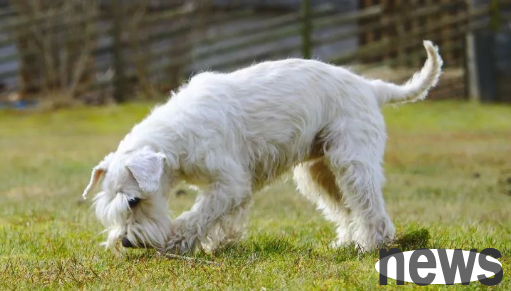Have you ever seen a dog with wide eyes and full concentration chasing its tail? That kind of picture is just funny and confused. Why do dogs do this? How should we deal with it? Next, let's discuss this interesting topic together. Cause Analysi...
Have you ever seen a dog with wide eyes and full concentration chasing its tail? That kind of picture is just funny and confused. Why do dogs do this? How should we deal with it? Next, let's discuss this interesting topic together.
Cause Analysis
The behavior of dogs rear-end tail is actually not a rare phenomenon. Many dogs do this, especially puppies. This is mainly because their lives are full of vitality and curiosity, and their tail happens to be a convenient and fun toy. In addition, some dogs may start rear-end tails because of anxiety, stress or boredom.

Response measures
Since we understand the reasons why dogs have rear-end tails, how should we deal with it?
Provide enough toys and activities: In order to satisfy dogs' curiosity and energy, we should provide them with enough toys and activities. When dogs have more interesting things to do, they will naturally not rear-end again.
Timed exercise: Taking dogs out for a walk or play regularly every day can help them consume extra energy and relieve anxiety and stress.
Seek professional help: If your dog chases his tail for a long time, or is accompanied by other abnormal behaviors, you may need to seek professional help from a veterinarian.
Preventive measures
Of course, in addition to responding, we can also take some preventive measures to prevent dogs from developing the habit of rear-end tail.
Early training: Start training dogs since childhood to let them understand that their tails are not toys, which can reduce their rear-end behavior when they grow up.
Environmental enrichment: Provide a colorful environment for dogs, so that they have enough things to explore and play with, so that they will naturally not be too interested in the tail. Although the behavior of dogs rear-end tail seems funny, it actually reflects their inner needs and emotions. As dog owners, we should pay more attention to their behavior and emotions and meet their needs as much as possible. By understanding and responding to dogs’ rear-end behavior, we can not only take better care of the dog, but also enhance our intimacy with the dog.
This also reminds us that we should pay enough attention and understanding whether it is for humans or animals. Only in this way can we establish a more harmonious relationship between people and people and animals. So, let us work together to create a better living environment for our dogs!